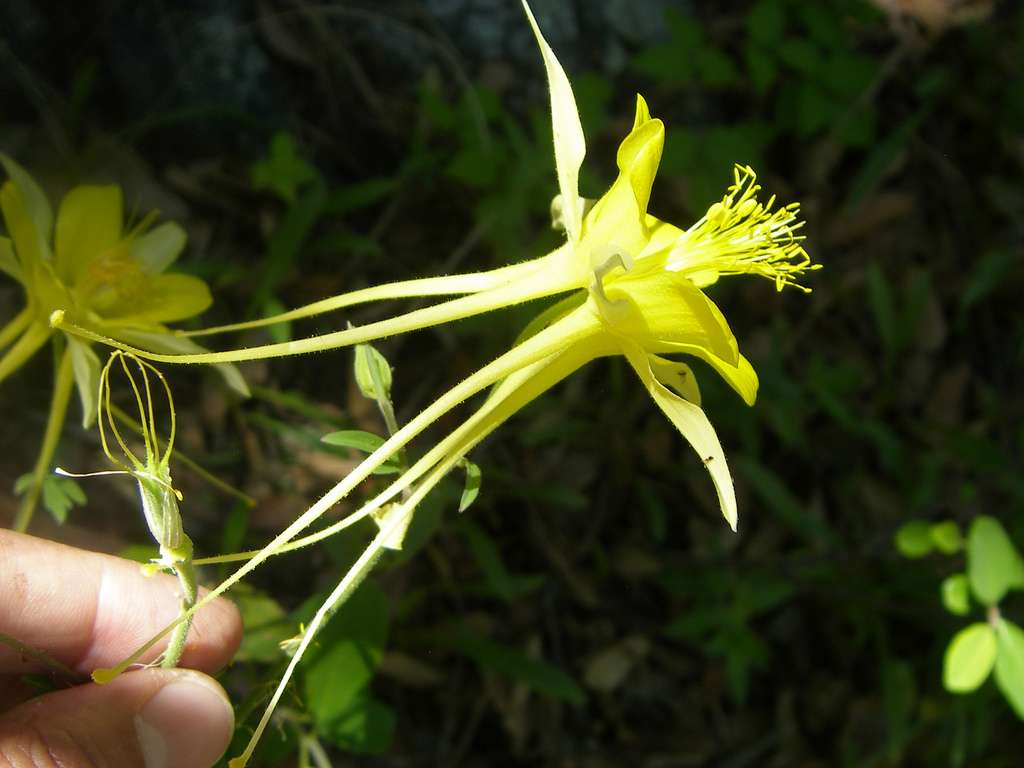|
Family: Ranunculaceae |
Herbs , perennial, from slender woody rhizomes. Leaves basal and cauline, proximal leaves petiolate, distal leaves sessile; cauline leaves alternate. Leaf blade 1-3×-ternately compound, leaflets lobed or parted, margins crenate. Inflorescences terminal, 1-10-flowered cymes or solitary flowers, to 30 cm; bracts leaflike, not forming involucre. Flowers bisexual, radially symmetric; sepals not persistent in fruit, 5, white to blue, yellow, or red, plane, narrowly ovate to oblong-lanceolate, short-clawed, 7-51 mm; petals 5, distinct, white to blue, yellow, or red, oblong to rounded or spatulate blade, 0-30 mm, base backward-pointing tubular spur, apex plane; nectary in ± enlarged tip of spur; stamens many; filaments filiform; scalelike staminodes usually present between stamens and pistils; pistils 5-10, simple; ovules many per pistil; beak present. Fruits follicles, aggregate, sessile, cylindric, sides prominently veined; beak terminal, straight, 3-26 mm. Seeds black, obovoid, smooth. x = 7. Species of Aquilegia are polymorphic and difficult to define adequately. Some of the variability is because of introgressive hybridization. Even distantly related species of columbine are often freely interfertile, and many cases of natural hybridization and introgression are known from North America. Only the most important are mentioned below. In arid areas Aquilegia species tend to form small populations often completely isolated from one another. This leads to local fixation of genes and therefore increased variability in species such as A . micrantha and A . desertorum . In addition, populations with spurless petals are occasionally found in many species.
Fls regular, but complex in structure; sep 5, short- clawed; pet 5, the blade prolonged backward from the base below the fl into an elongate, hollow spur; stamens numerous, often ±connivent, the innermost staminodial; follicles mostly 5, erect; perennial herbs from a stout, caudex-like rhizome, with petiolate, 2-3 times ternately compound, alternate lvs and few but showy fls. 70, N. Hemisphere. Gleason, Henry A. & Cronquist, Arthur J. 1991. Manual of vascular plants of northeastern United States and adjacent Canada. lxxv + 910 pp. ©The New York Botanical Garden. All rights reserved. Used by permission. |


